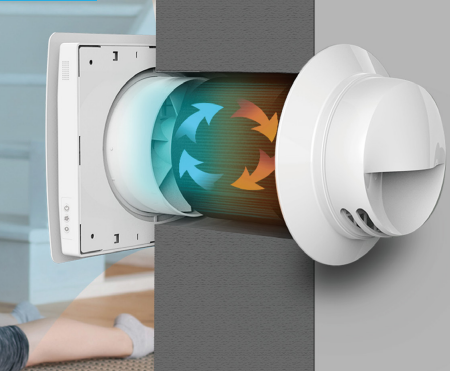Should You Buy HRV? Pros and Cons
Checking out the Benefits of Heat Recovery Ventilation for Power Performance in Homes
Heat Recovery Ventilation (HRV) systems provide home owners a functional approach to enhancing power efficiency. By reclaiming heat from outward bound air, these systems can considerably reduce heating & cooling costs. Furthermore, they provide a consistent supply of fresh air, boosting indoor air quality and convenience levels. As house owners take into consideration sustainable options, understanding the subtleties of HRV systems ends up being significantly vital. What variables should one evaluate prior to making such an investment?
Understanding Heat Recovery Ventilation Equipments

Exactly How HRV Enhances Indoor Air High Quality

Energy Savings: The Monetary Benefits of HRV
Maximizing energy effectiveness, heat recovery ventilation (HRV) systems provide considerable monetary benefits for homeowners. By recuperating and reusing warm from exhaust air, HRVs noticeably minimize home heating and air conditioning costs. This innovation can lead to power cost savings of as much as 30%, depending on environment and use patterns. House owners typically notice reduced energy bills soon after installation, making HRVs an economically smart investment in time. In addition, several areas supply motivations or discounts for energy-efficient upgrades, further enhancing the monetary appeal. As energy rates proceed to increase, the cost-effectiveness of HRVs ends up being significantly clear. In general, the unification of HRV systems not just promotes power efficiency yet likewise adds to lasting financial cost savings for families.
The Ecological Effect of Heat Recovery Ventilation
A significant environmental benefit of heat recovery ventilation (HRV) systems lies in their capability to lower overall power consumption. By recovering warm from exhaust air and transferring it to inbound fresh air, HRV systems lessen the need for energy-intensive home heating and cooling down methods. This decrease in energy demand contributes to reduce greenhouse gas exhausts, as much less fossil fuel is needed to preserve comfortable interior temperature levels. Additionally, HRV systems improve interior air top quality by effectively exchanging stagnant air with fresh exterior air, minimizing dependence on mechanical cooling click here to find out more systems that can hurt the environment. In general, the application of HRV systems sustains sustainable living techniques and aligns with global initiatives to combat environment modification by promoting power performance in property settings.
Selecting the Right HRV System for Your Home
Exactly how can home owners assure they choose the best heat recovery ventilation (HRV) system for their requirements? learn this here now They must evaluate their home's size and layout, as these factors influence airflow demands. Next off, reviewing the system's effectiveness ratings is vital, as greater scores show better performance and energy cost savings. Homeowners need to additionally take into consideration installment and upkeep costs, contrasting various brand names and versions for value. In addition, it's vital to review sound levels, as some systems operate even more silently than others. Consulting with HVAC specialists can supply tailored recommendations based on specific home conditions. Ultimately, taking a look at user testimonials and guarantees can assist in making an informed choice, guaranteeing that the chosen HRV system efficiently enhances indoor air high quality and energy performance.
Often Asked Inquiries

How Commonly Should I Tidy or Preserve My HRV System?
The regularity of cleaning or maintaining a warmth healing air flow (HRV) system typically relies on usage and ecological factors. Usually, it is a good idea to do upkeep every six months to ensure peak performance and air top quality.

Can HRV Solutions Help In Reducing Moisture Levels Inside?
HRV systems can efficiently reduce indoor moisture levels by trading stale, moist air with fresh, drier air from outdoors. HRV Heat Recovery Ventilation. This procedure assists keep a well balanced interior atmosphere, improving comfort and avoiding moisture-related issues
What Is the Life-span of a Common HRV System?
The life-span of a normal heat recovery ventilation (HRV) system differs, normally lasting between 10 to 15 years. Normal upkeep can prolong its efficiency and operational life, guaranteeing peak efficiency throughout its usage period.
Are There Any Noise Concerns With HRV Equipments?
Sound worry about HRV systems can emerge, specifically from follower operation. Lots of modern-day devices are created to reduce sound degrees, ensuring they operate quietly while maintaining efficiency, which attends to prospective disruptions in living environments.
Can I Set Up an HRV System Myself, or Do I Required an Expert?
The private contemplated whether to set up the heat recovery ventilation (HRV) system directly or hire a specialist. Usually, while DIY setup is feasible, expertise warranties correct performance and conformity with neighborhood building ordinance, look at this now improving system effectiveness.